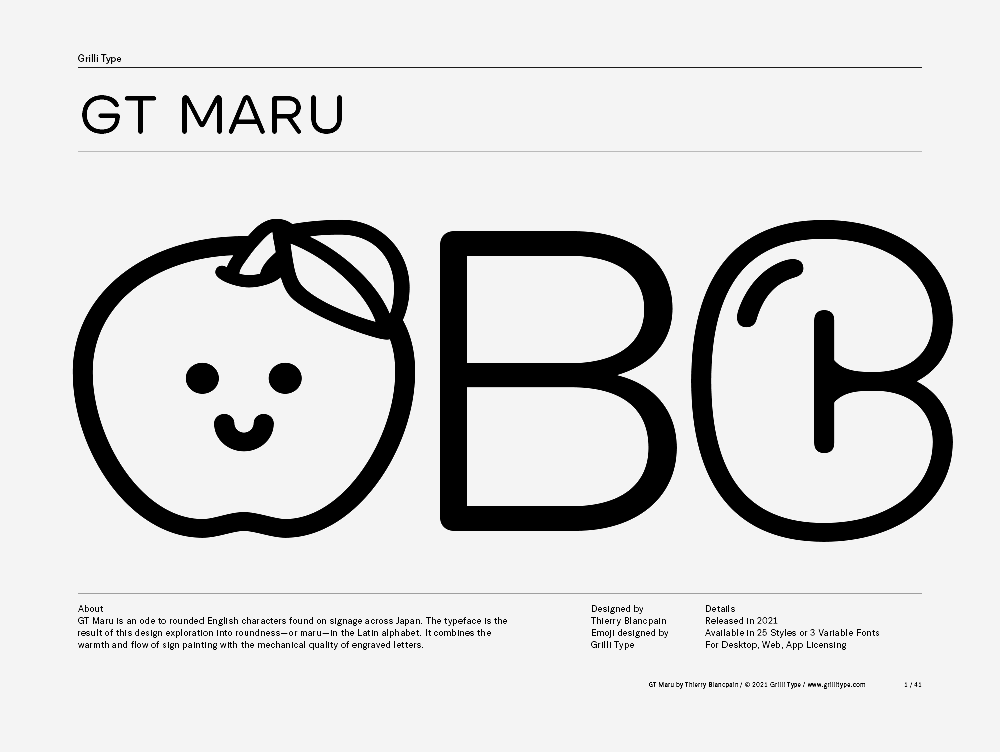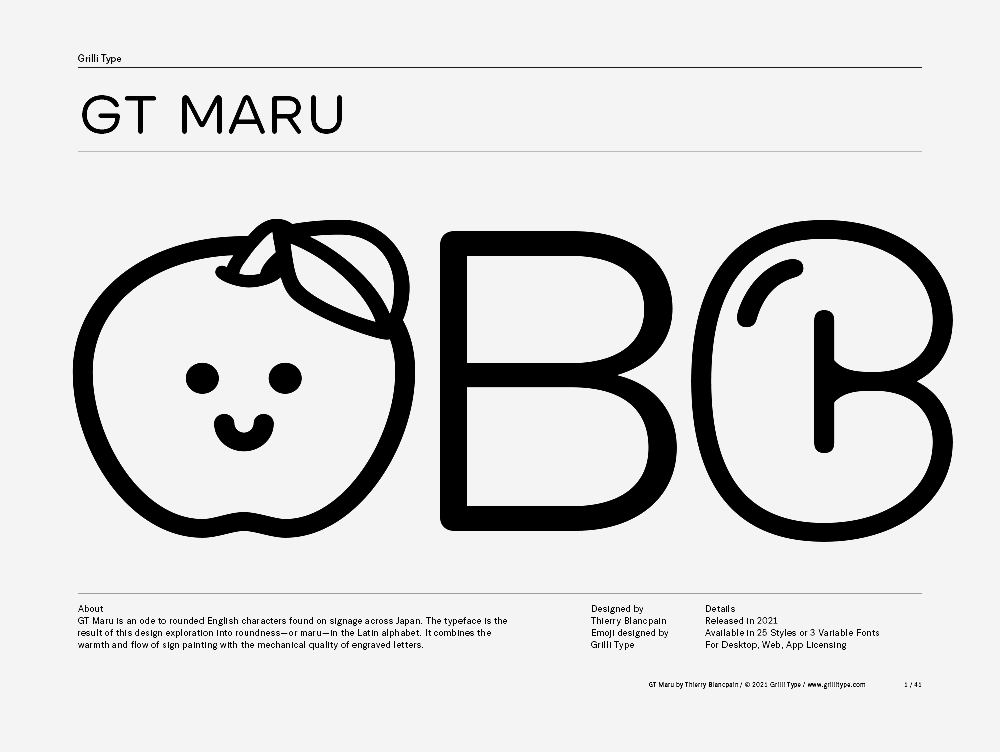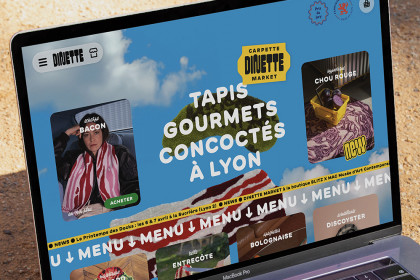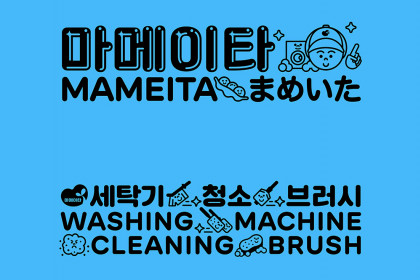GT Maru
Family overview
- GT Maru
- Light Oblique
- Regular Oblique
- Medium Oblique
- Bold Oblique
- Black Oblique
- Mono
- Light Oblique
- Regular Oblique
- Medium Oblique
- Bold Oblique
- Black Oblique
- Mega
- Mini
- Midi
- Maxi
- Emoji
- Color
- Black and White
Subfamilies
- LightRamen (literally: pulled noodles) is a Japanese noodle soup
- Light ObliqueRamen (literally: pulled noodles) is a Japanese noodle soup
- RegularThe airport island link to the mainland via the Sky Gate Bridge R
- Regular ObliqueThis station is connected to Ōsaka Station at Ume- da by the JR Kyoto Line
- MediumHiroo, Daikanyama, Aoyama, and Ebisu areas
- Medium ObliqueA street vendor named Tomekichi Endo is credited with its invention in 1935
- BoldThe Tokyu Toyoko Line opened in 1932
- Bold ObliqueThe sugar content rating is at least 13 brix and the citric acid content is 1%. The fruit cracks easily in summer and autumn.
- BlackHassaku orange is Japanese citrus hybrid similar to an orange in color but with the size of a grapefruit
- Black ObliqueCurry was introduced to Japan during the Meiji era (1868–1912), at the time when the Indian subcontinent was under British colonial rule
- Settings
Typeface information
GT Maru is an ode to rounded English characters found on signage across Japan. The typeface is the result of this design exploration into roundness — or maru — in the Latin alphabet. It combines the warmth and flow of sign painting with the mechanical quality of engraved letters.
Typeface features
OpenType features enable smart typography. You can use these features in most Desktop applications, on the web, and in your mobile apps. Each typeface contains different features. Below are the most important features included in GT Maru’s fonts:
- SS01
- Single-Story a & g
Higashi
- SS02
- Alternate exclam
¡Capital!
- SS01
- Single-story g
Nagoya
- SS02
- Alternate l
Formerly
- SS03
- Alternate exclam
¡Edo!
- SS04
- Outline
Uehara
- SS05
- Outline Shaded
Shōken
- SS06
- Glow
Ujigawa
- SS07
- Outline Glow
Chiba
- SS08
- Outline Shaded Glow
Kadoma
Typeface Minisite

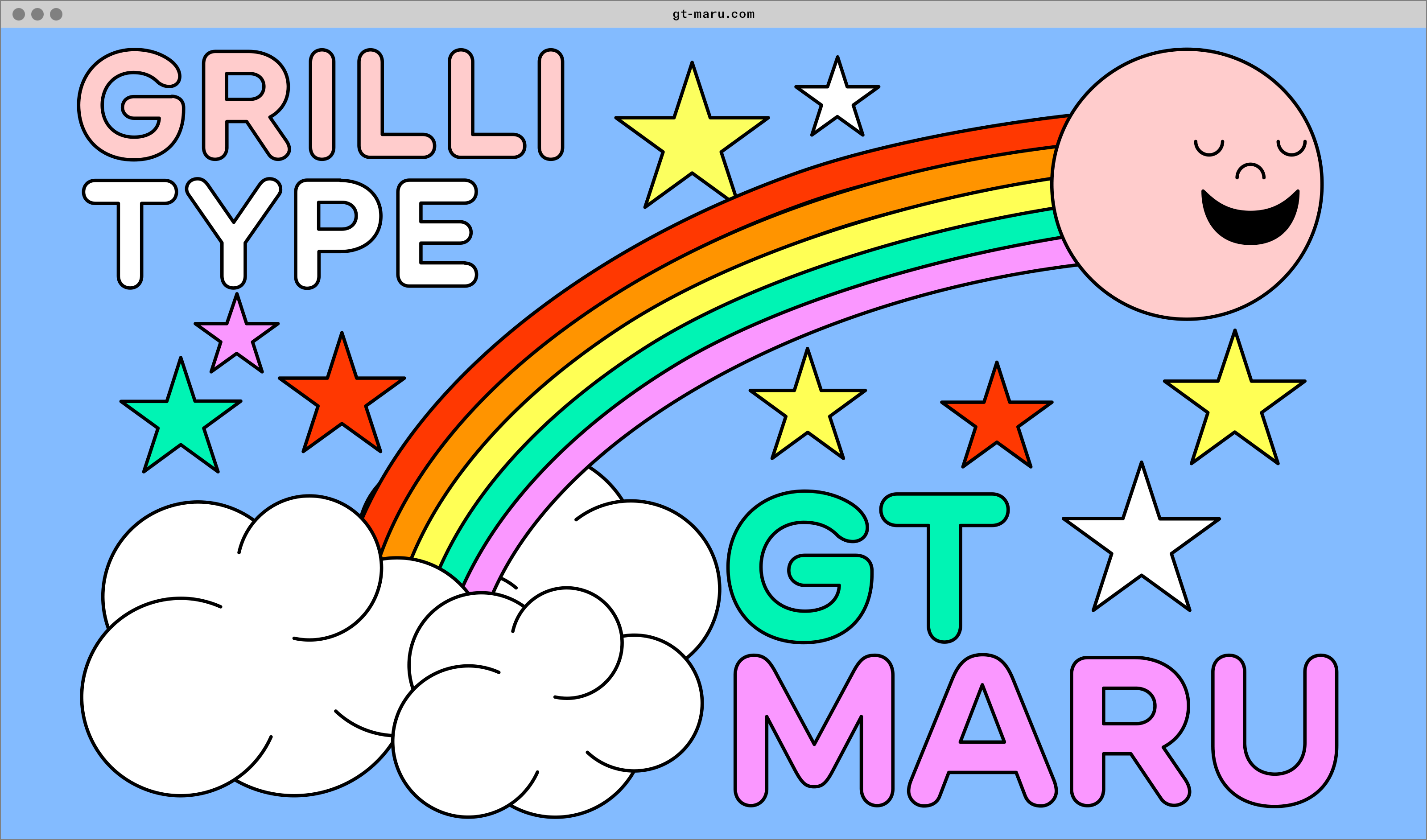
- Visit the GT Maru minisite to discover more about the typeface family’s history and design concept.
GT Maru in use
